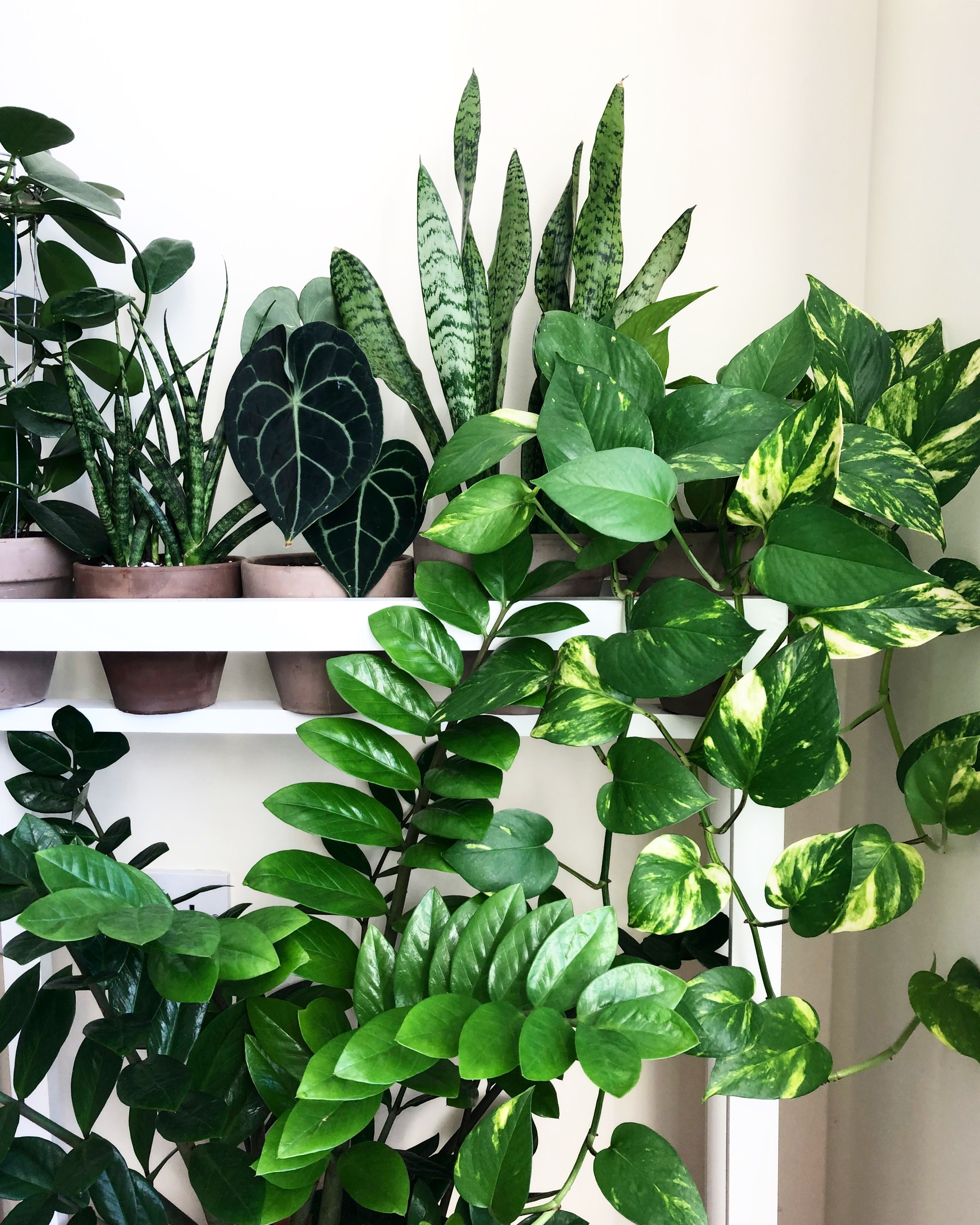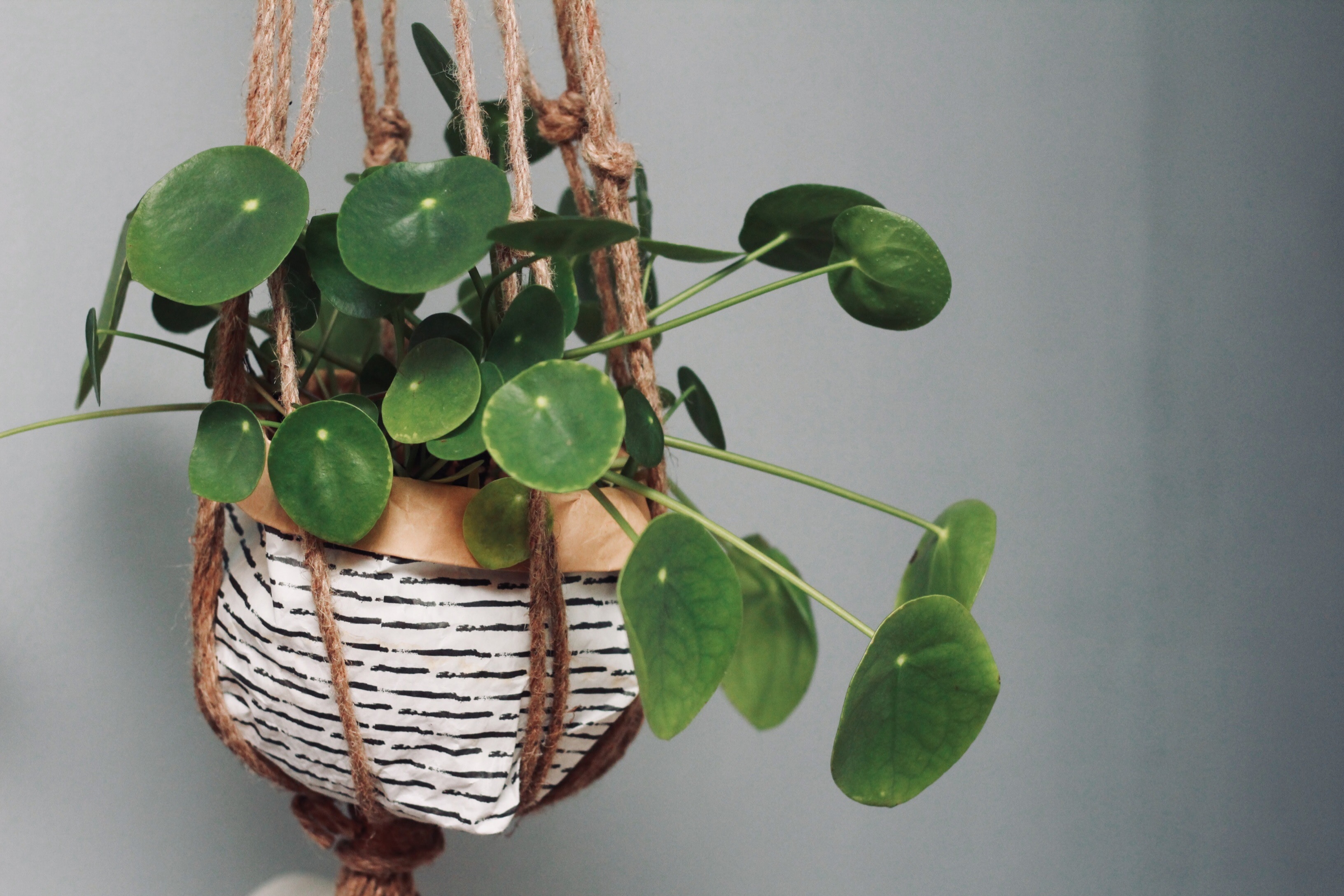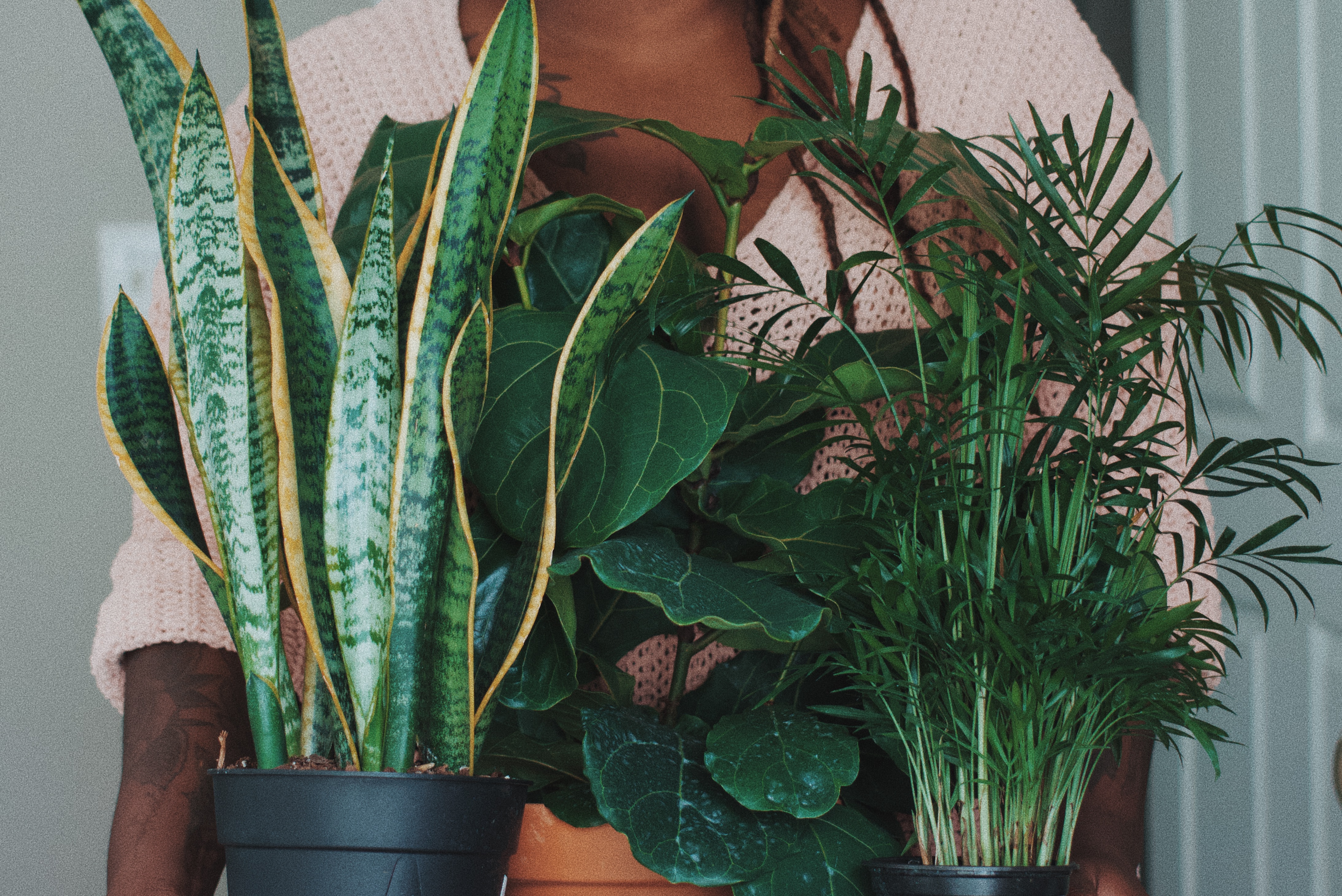
Filling up homes with houseplants is the latest décor trend, and with good reason: plants brighten up our spaces, they cleanse and purify the air around them, and also help in boosting productivity, creativitiy, and happiness. Surrounding yourself with plants goes a long way in decreasing stress levels – and we all know we could use more of that.
Now, while we wish our homes were filled with thriving, beautiful, lush green houseplants, we’re not all born plant ladies (Raise your hand if you’ve ever killed a succulent!). If you don’t exactly have a green thumb or are new to indoor gardening, the worst thing you can do is begin with a plant that is difficult to take care of. It’s easy to get discouraged when the plant you purchased at your favourite nursery starts turning yellow and dropping leaves everywhere. Fortunately, there are quite a few low-maintenance houseplants that you can start building your indoor sanctuary with. Here are a few of our favourites:
1. Pothos
This tough-as-a-nail plant grows fast and is perfect for the impatient plant parent. It is also one of the most recommended house plants. Pothos is great for purifying air quality as it can absorb and strip toxins from materials in your home. And if you enjoy the drama of a good climbing vine, this is the plant for you!
What it needs: Low to medium indirect sunlight. Water when soil is dry.
2. Aloe Vera
Aloe vera is widely known for its healing properties, and been used in applications of beauty and medicine since centuries. But, did you know the spiky aloe plant is actually a succulent? It’s also super low-maintenance, and is good for clearing the air of pollutants.
What it needs: Bright indirect sunlight. Water once every week or two.
3. ZZ Plant
Officially named Zamioculcas zamiifolia, the ZZ plant is native to East Africa. It’s a tall, structural plant that will work as a statement décor element in any room! It’s extremely low maintenance, and is almost better off without you fussing over it. Almost. Watering it once every couple of weeks is more that enough to sustain it.
What it needs: Low and indirect light. Water once every two weeks.
4. Snake Plant
The snake plant or Sansevieria, this plant gets its name from the thin, upright leaves with ‘irregular green banding’ that looks like snakeskin. The snake plant is also known for removing toxins from the surrounding air – it converts carbon dioxide to oxygen during the night unlike most other plants that only perform that function during the day, making it ideal even for the bedroom. Just like the ZZ plant, this is another almost invincible plant and can survive a decent amount of neglect. It grows upward not outward, making it the ideal plant for lazy plant parents.
What it needs: Prefers bright light but can survive lower light levels. Water every two weeks.
5. Spider Plant
The spider plant is also resilient and requires little care. It’s an air-purifying plants, and as they grow, they product little flowers in the summer that you can repot for another spider plant (so that you can get that lush sanctuary look you’re going for!)
What it needs: Bright light but no direct sun. Water 1x per week.
6. Peace Lily
Although this requires more attention compared to the other indoor plants on this list, it is ideal if you’ve had experience keeping a plant alive. Peace lily is a powerful flowering plant that’s easily distinguishable by its white flowers, and it can filter toxins from the air. It can also comfortably adapt to most temperatures and climate conditions.
What it needs: Medium, indirect light. Water when leaves droop.
7. Areca Palm
If you’re looking to add a tropical feel to an indoor space, the Areca palm is it. This plant can grow up to seven feet in height! Use the Areca palm in a larger room to add a bit of sunny tropical drama year round. This sturdy plant can combat stressful weather conditions and is reasonably low maintenance.
What it needs: Bright, indirect light. Water to keep the soil moist.
8. Ficus
The Ficus benjamina (also known as the ‘weeping fig’) is a popular houseplant in India, and is known for being the best plant for office and workspaces. That is because of their striking appearance, and highly effective characteristic of purifying air.
What it needs: Bright, filtered light. Several days of dry soil in between thorough watering.
9. Money Plant
Just like the name suggests, the money plant is considered auspicious and lucky (according to the Hindu belief system of Vastu Shastra) when placed in the southeast part of the house. While its auspiciousness is up for debate, we know for a fact that the money plant is one tough cookie. It’s also among the fast-growing plant group, so make sure to place it in a spot where it has room to grow.
What it needs: Medium, direct or indirect light. Water when soil is dry.
10. Succulents
You’ve probably been seeing these all over Instagram and Pinterest, as they’re the trendiest to join the houseplants category. You can buy a combination of different types of succulents (Cacti, Burrow’s tail, Jade etc.) and create a simple centerpiece, or use it as desk decor. While they look great, they are also great at absorbing toxins.
What it needs: Natural direct light. Water 1x a week during spring and summer. 1x every three weeks in fall and winter.

Now that you’ve got all the info you need to pick your choice of houseplant (or two, or three!), here are a few extra tips so you can tap into that inner plant lady:
- Start with a plant that fits into your lifestyle – it’s better to start slow to keep your plant alive and thriving; than spending a bomb on plants that you can’t keep up with.
- Take care of them. Yes, most of these houseplants are low maintenance but you do need to water and give them enough sunlight as per their individual requirements.
- On the flip side, don’t overwater them! Too much water can kill the plant. A good rule of thumb is to use planters with drainage, and pour until the water trickles into the saucer below.
- Mix and match, and layer your plants! Just like you would layer textiles in a home, plants should be layered too. Use different textures, sizes, and planters to create stylish nooks throughout your home.
- Fill up empty corners, bare bookshelves and nightstands, and sunny windowsills. You can pretty much add a plant to every room (bedroom friendly plants require additional research).
- If you have kids or pets, be sure to check if the plant is toxic before purchasing.

And check out these gorgeous planters to house your beautiful new plants:
Image Sources: Cover image by @basillicana












